Your basket is currently empty!
A couple of weeks ago, I was fortunate enough to finally visit the Cathedral Treasury of Anagni near Rome, Italy. The treasury houses several pieces of Opus anglicanum, not only the namesake cope. One of these pieces is the chasuble, which you can see below. However, this vestment started life as a dalmatic. It was made in the last third of the 13th century, either in England or in France. It was likely gifted to Anagni Cathedral by Pope Boniface VIII (AD 1294-1304). Anagni was the summer residence of the popes, and several medieval popes were born here. Let’s explore this beautiful piece of Opus anglicanum.
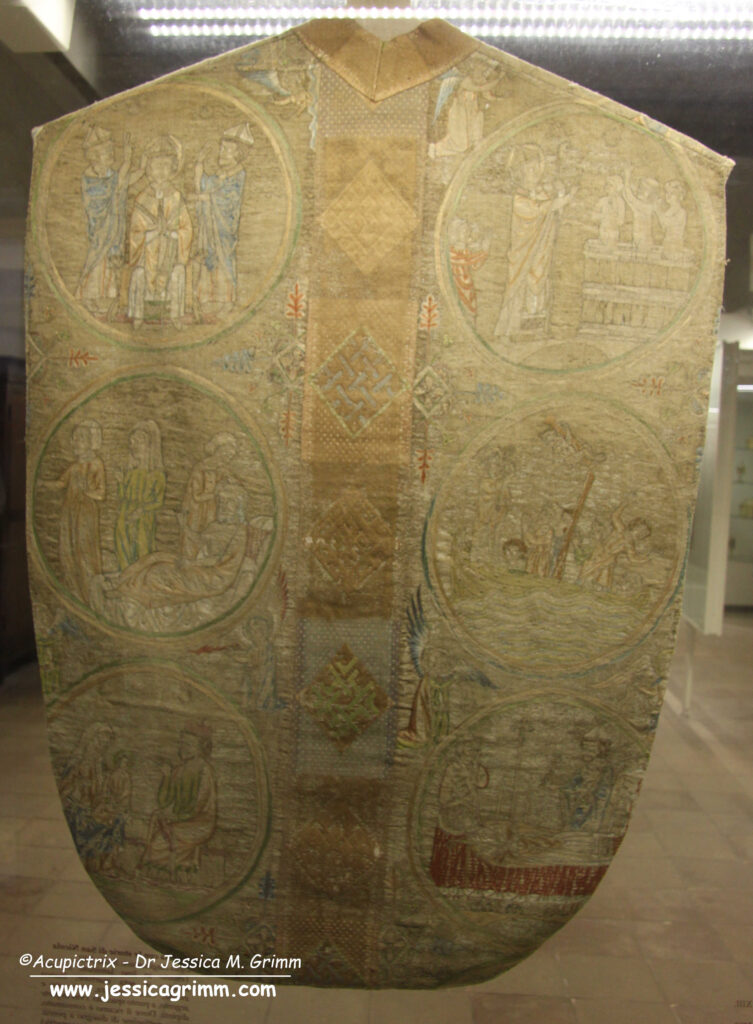
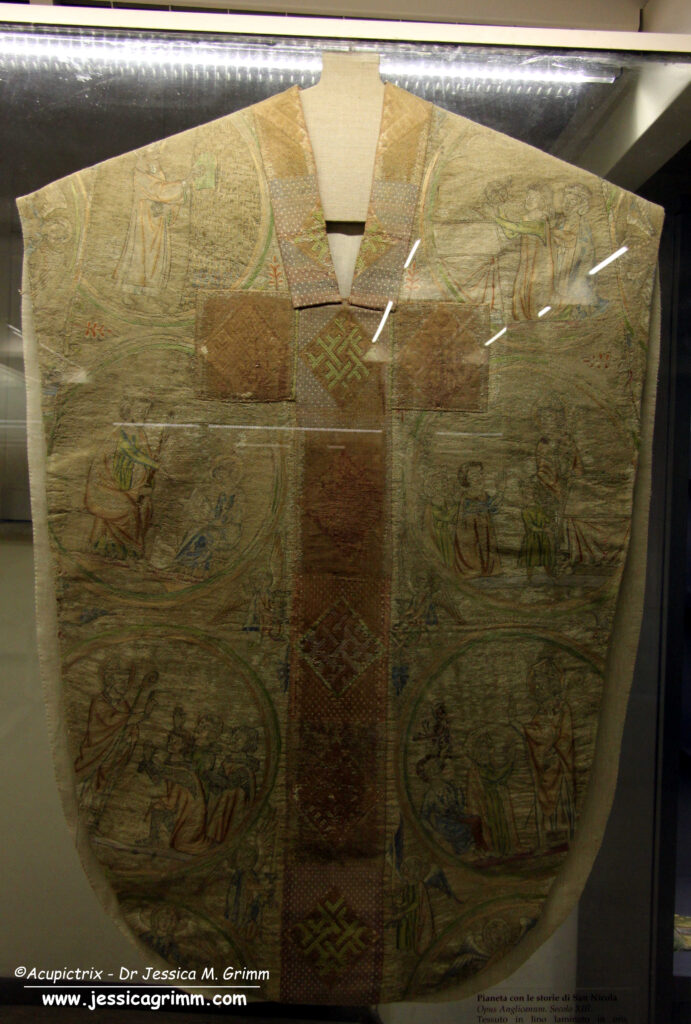
Above, you see the front and the back of the chasuble. There are also additional fragments on display. The original dalmatic and a further cope were turned into this chasuble and two dalmatics in the 16th century. And whilst it was possible to dismantle the dalmatics and reconstruct the cope, this was not possible for the chasuble. Its original shape is a bit of a mystery. You can find proposed reconstructions in the literature below. However, none seems to be entirely right.
Most of us are pretty familiar with all-over embroidered linen Opus anglicanum copes. Personally, I never thought about what the corresponding chasubles, dalmatics and tunicellas looked like … The copes get so much attention. However, these copes would have had equally splendid and matching other vestments. The Anagni chasuble/dalmatic seems to be a rare survivor.
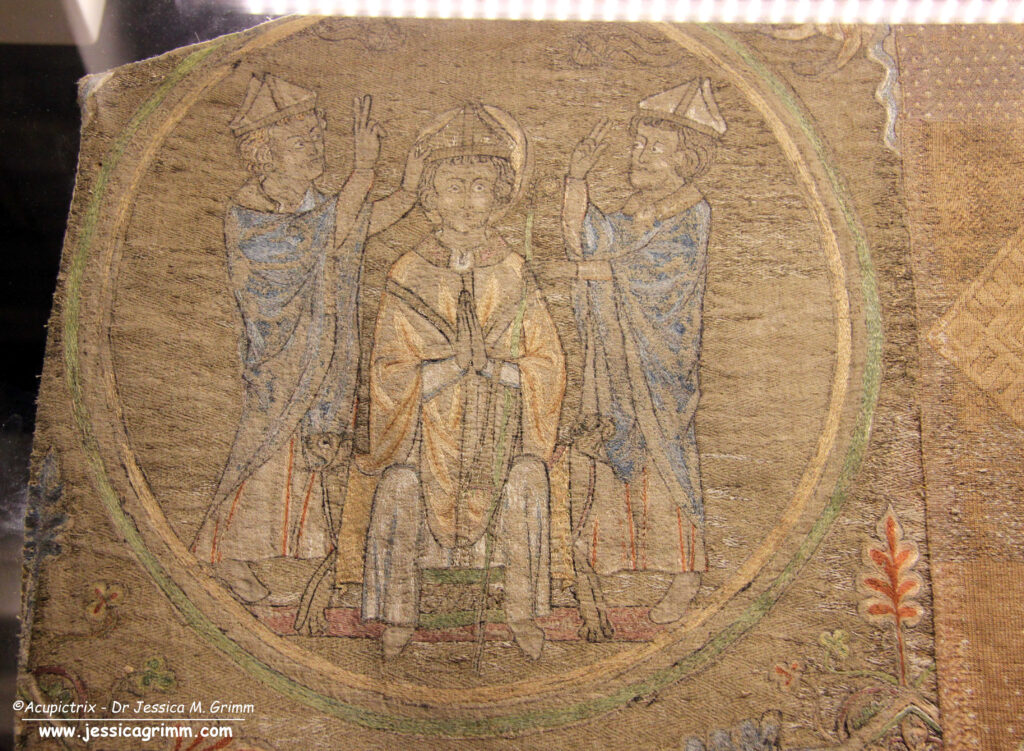
Whether this embroidery was made in England or France is not entirely known. Saint Nicholas was a popular medieval saint throughout much of Europe. However, some scholars see a French influence in the style of the designs. The embroidery itself has some oddities, too. Firstly, the gold threads run horizontally instead of vertically. This means that they pull on the weft threads of the linen. The circular frames surrounding each scene have been pulled out of shape into a slight oval. Secondly, the outlines are not stitched with the customary black silk. Instead, a light brown was used. Christie also notes that the blue is not the usual indigo blue seen in other Opus anglicanum. A non-English provenance is thus possible.
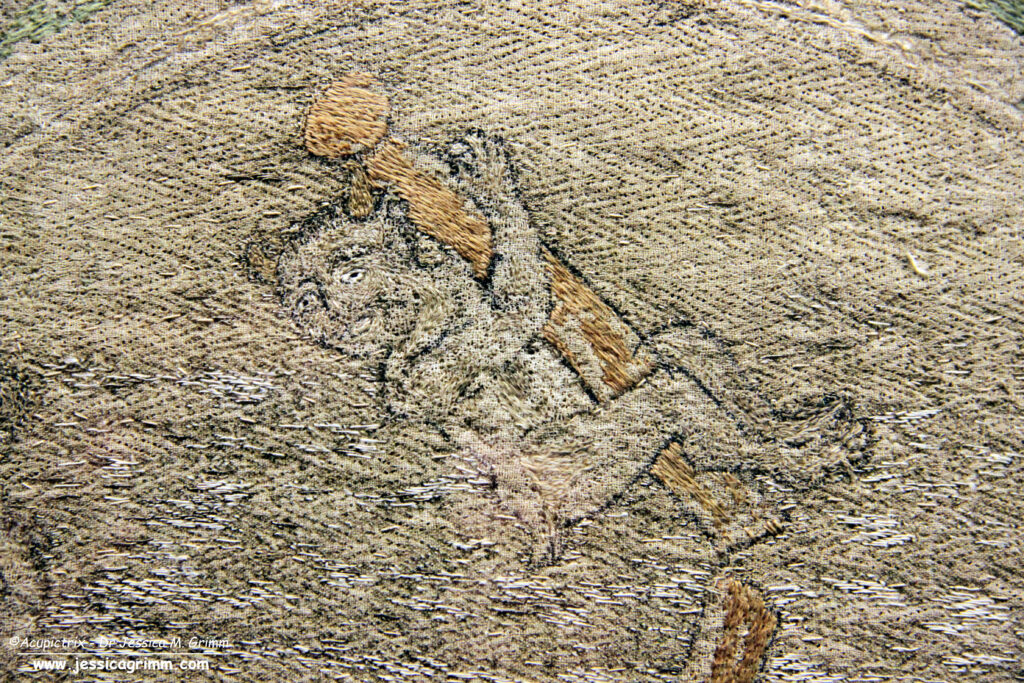
My Journeymen and Master Patrons can enjoy many more pictures of this splendid piece of Opus anglicanum. I also run a lovely digital advent calendar for all my paying Patrons. As a Patron, you can access all previous posts according to your chosen tier. Please note: I will not publish free stuff on my Patreon site. The excellent free stuff is here on my blog. Running a paid Patreon site has made a massive difference in my life. I am finally able to draw a small income from my hard work. Thank you for understanding!
Literature
Christie, A.G., 1938. English Medieval Embroidery: A brief survey of English Embroidery dating from the beginning of the tenth century until the end of the fourteenth. Clarendon Press, Oxford.
Elster, C., 2018. Die textilen Geschenke Papst Bonifaz’ VIII. (1294-1303) an die Kathedrale von Anagni. Michael Imhof Verlag, Petersberg.
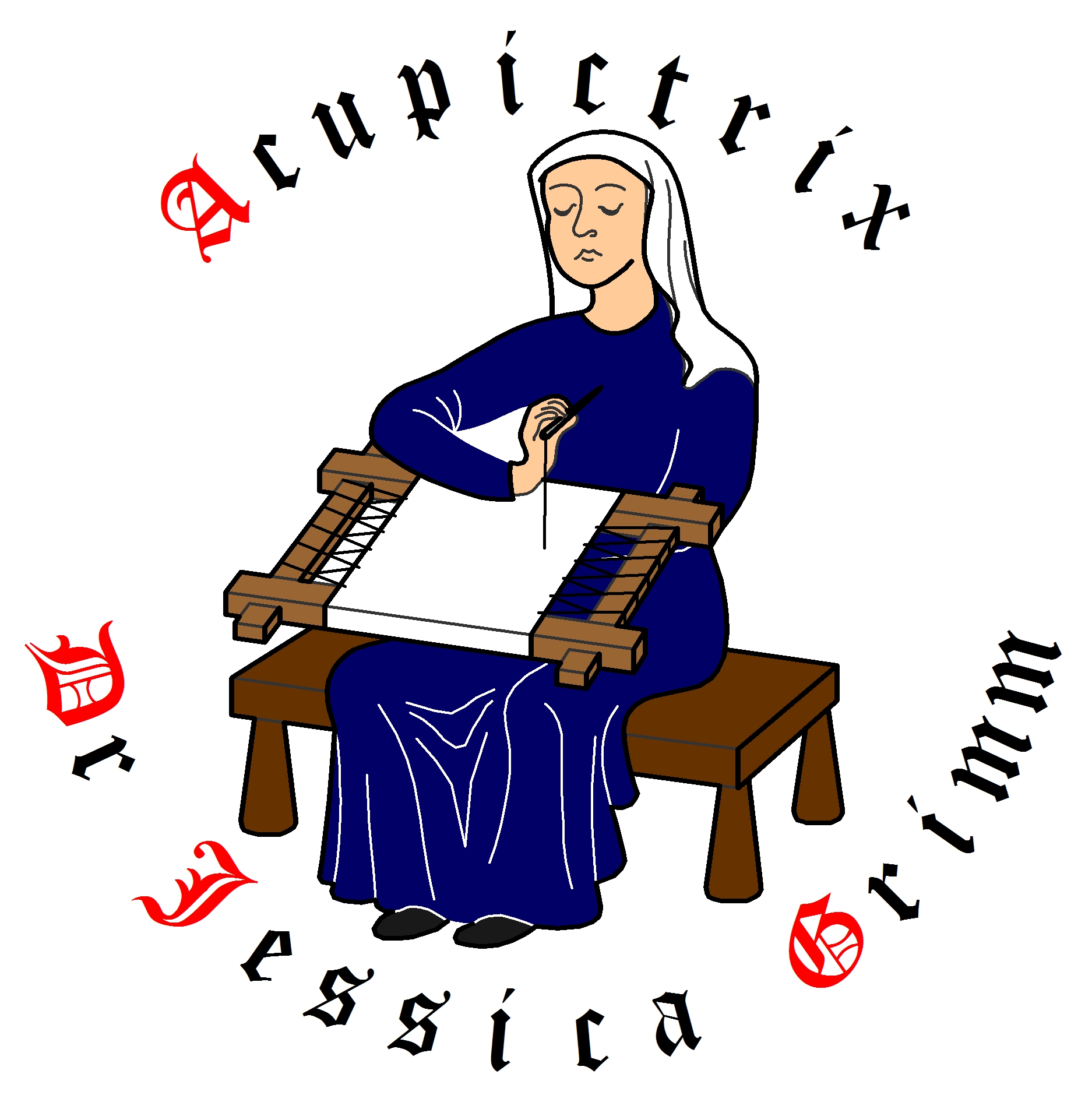
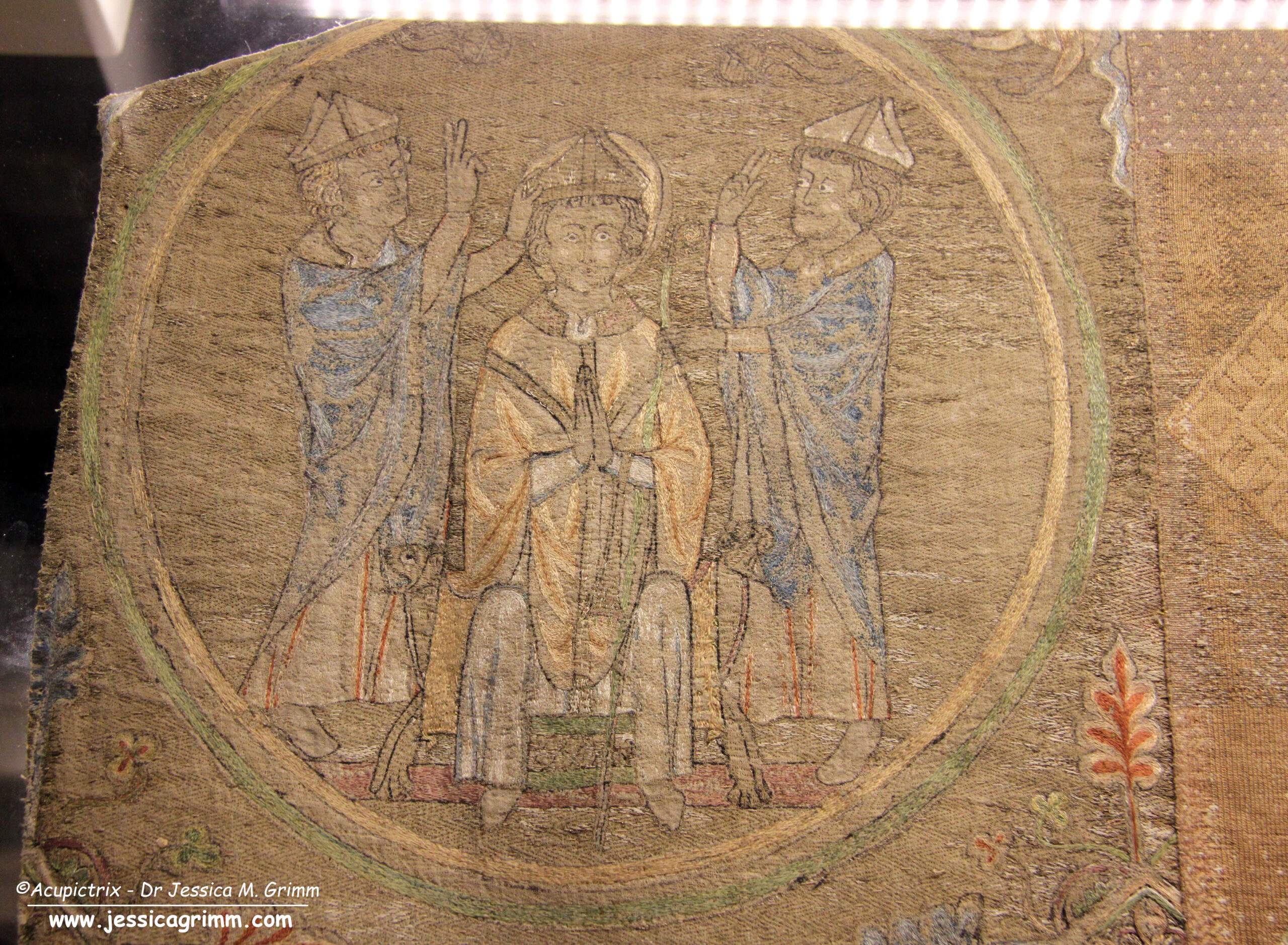
Leave a Reply